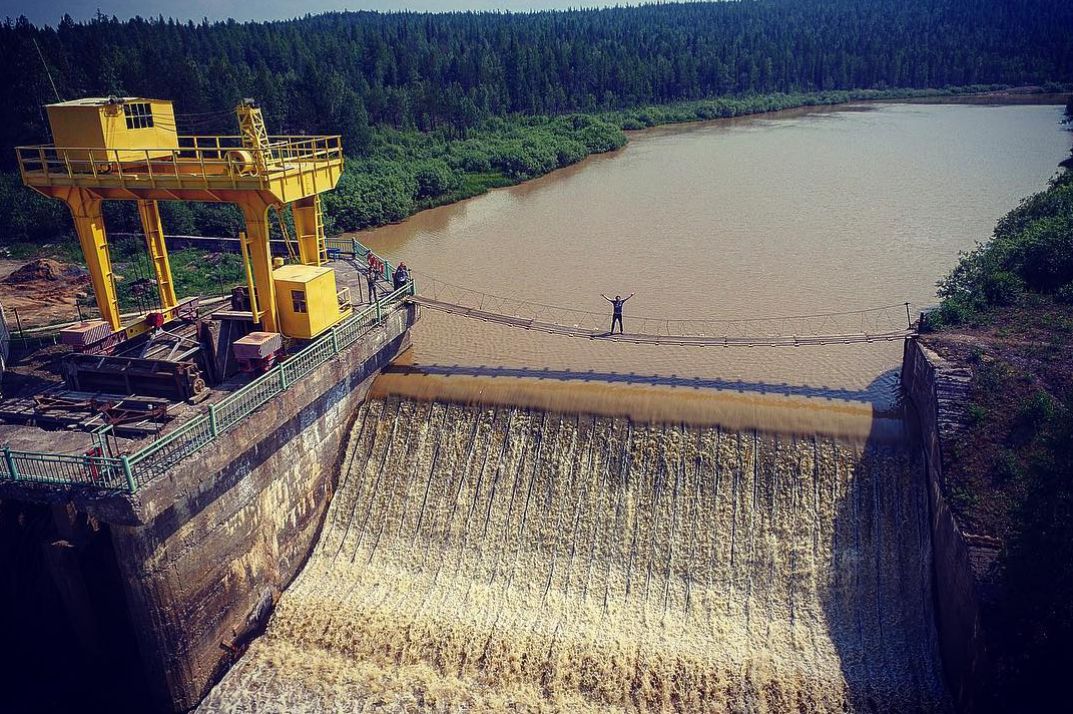SHORT SOBERING REPORT
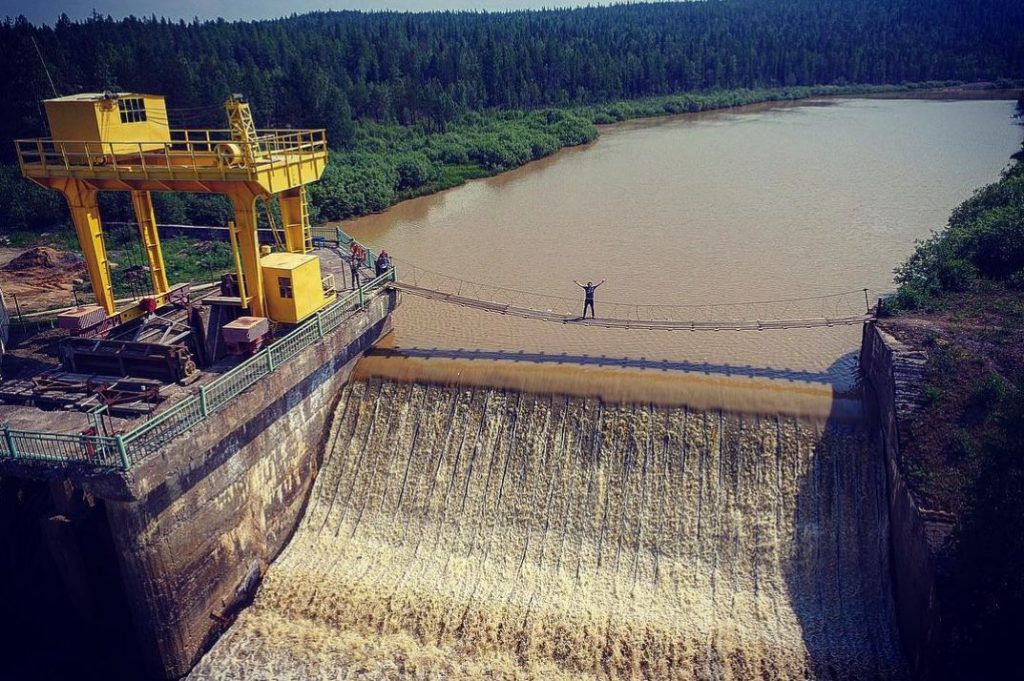
Since the Report by World Commission on Dams (Nov. 2000) for 20 years there has been relative consensus that large hydro is associated with excessive social and environmental impacts and should be given no green ticket into sustainable future. Somehow it was simultaneously stipulated that “small hydro is OK” and it took two decades and thousands of ruined rivers to start questioning this type of “green energy”.
Major international energy organizations(like the the IEA or IRENA) have already stopped dividing hydropower into “small” and “large” about 3-5 years ago as it became clear that the size of a facility (if intended to sell energy to the grid) does not really make qualitative difference in its environmental and social impact if measured per unit capacity or production. Doing so these bodies catering to corporate interests pretend that “large hydro is as good as small hydro”, but we hold the opposite view.
Any hydropower dam, small and large alike, if built at natural water body, still blocks natural process in a living river (or lake) disrupting its many ecological services. Somehow, reference to “renewable” small hydro was left in many development programs and they continue to get international and national subsidies as if they represent better solution to climate crisis.
Alas, they do not represent any solutions at all for clean energy production.
“Small hydro” was recognized by UN as installations less than 10 MW, but many countries consider much larger installations, like<50 MW in Brazil and <25 MW in Russia as small hydro, mainly to be ably to fuel their development by subsidies.
Disclaimer: This report does not relate to mini (typically less than 500 Kv) and micro-hydro (less than 100Kv) approved by local communities. It does not analyze projects equipping existing canals, reservoirs and dams with generators. In general it addresses schemes modifying natural streams of any size, except for those off-stream devices that take less than 10% of flow in dry season and do not use dams or weirs to divert that water from the stream. It also does not contain any judgment on closed-loop pumped hydro, which does not use natural water bodies as reservoirs .The report relates primarily to “small hydro” attempted to sell electricity to grids and work as “market solution for green energy”, while rare attempts to develop energy solution for local communities are practically non-existent by now due to availability of cheaper and mobile wind and solar solutions.
In October 2020 the WWF and 150 European NGOs presented a Manifesto against construction of any new hydro in the EU. They stated: “New hydropower would provide negligible benefits in terms of power sector decarbonisation, but with freshwater migratory fish populations having collapsed by a catastrophic 93% in Europe since 1970, and dams, weirs and other barriers being amongst the key drivers, the development of greenfield hydropower is incompatible with the Biodiversity Strategy l and the EU commitment to restore free-flowing rivers. Incentives and investment should instead be moved into the refurbishment of existing plants to lessen their impact on biodiversity, or to low-cost, low carbon, low-impact alternatives, such as appropriately sited solar and wind power.”
More than 90% of hydropower plants that threaten European rivers are less than 10 MW each, making their contribution to the energy system negligible. The non-sustainable nature of small hydro was also recognized by the European Commission’s Technical Expert Group on Sustainable Finance Taxonomy, which recommended in early 2020 that construction of hydro less than 10 MW should be avoided. And this is not a uniquely European problem. Similar to Europe, in any other part of the world where large numbers of small dams are planned they present a threat to whole river systems without much promise for energy systems. Brazil is an astonishing example of this self-defeating “green energy development”.
Major education is needed among policy-makers and the public to make everyone understand that small hydro is inherently non- viable solution for “green energy shift” due to:
- installation cost typically exceeding USD 3000-6000/kw ;
- high probability of seasonal drying of small streams and low efficiency;
- inherent lack of standardized solutions for replication and lack of scalability compared to wind and solar,
- high costs and difficulties in maintenance and replacement of parts;
- major negative ecological impact on affected streams and surrounding landscapes, etc.
However, first of all, “small hydro” is a typical false solution because it does not (and cannot) produce energy at any noteworthy scale to fuel “shift to green economy”.
Let us listen to the most professional experts in the field: World Small Hydropower Development Report http://www.smallhydroworld.org/
“The World Small Hydropower Development Report (WSHPDR) 2019 is the result of an enormous collaborative effort between the United Nations Industrial Development Organization (UNIDO), the International Center on Small Hydro Power (ICSHP) and over 230 local and regional small hydropower (SHP) experts, organizations, engineers, academics and government officials across the globe.
The global installed SHP capacity for plants up to 10 MW is estimated at 78 GW according to the World Small Hydropower Development Report (WSHPDR) 2019). SHP represents only approximately 1.5 per cent of the world’s total electricity installed capacity, 4.5 per cent of the total renewable energy capacity and 7.5 per cent (< 10 MW) of the total hydropower capacity.”
As one may understand the source we use has been developed by most devoted proponents of “small hydro” with huge personal stakes in it. Still, information it contains is self-explanatory and self-defeating.
In 2013-2019 the global capacity of small hydro increased only by 10% or by 7000 MW from 71 to 78 GW, which is the slowest growth among all renewables. (See Graph and Table below).
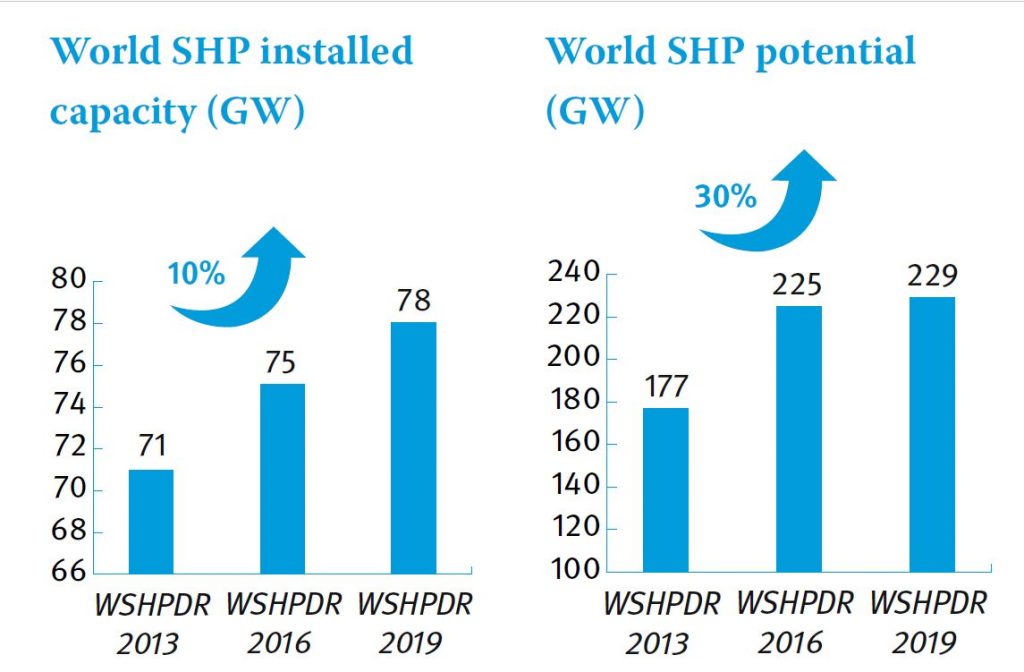
Table 1. Global growth in renewables (MW).
In many regions of the world number of small hydropower stations goes down as soon as more efficient RE alternatives become available or spread of national grids makes old small hydropower schemes uneconomical. For example, Russia now has only 5% of small hydropower plants it had in the 1960s (140 against 7000).
| Technology | 2013 | 2016 | 2018 | Increase MW | Increase % |
| Total renewable energy | 1 563 122 | 2 007 996 | 2 350 755 | 787 633 | 50.39 |
| Hydropower all | 1 135 533 | 1 243 874 | 1 292 595 | 157 062 | 13.83 |
| Wind | 299 941 | 467 052 | 563 726 | 263 785 | 87.95 |
| Solar | 139 603 | 297 293 | 485 826 | 346 223 | 248.01 |
| Bioenergy | 84 703 | 104 788 | 115 731 | 31 029 | 36.63 |
| Geothermal | 10 731 | 12 281 | 13 329 | 2 598 | 24.21 |
| Small HPP | 71 000 | 75 000 | 78 000 | 7 000 | 9.86 |
Given non-standardized nature of small hydro engineering works it is not feasible anywhere to speed-up significantly development of remaining “potential” and therefore SHPP contribution to “green energy” will always be negligible in any region of the world, even in the most energy-thirsty region, like Africa.
Why choose Africa as an example? It has best preconditions for energy/hydropower development worldwide:
– Energy poverty highest on the planet
– Greatest number of rivers yet to be dammed
– Poor development of grids calling for localized solutions
– Great amount of development aid in energy sector.
So, if small hydro presents a solution to energy and climate crisis, Africa should be a natural champion in its development? Reality check shows it is not.
Small Hydro in Africa
Table 2. Overall installed capacity in Africa( MW):
| Parts of Africa | Total electricity capacity | Hydro | Small Hydro | % of SHPP in all electricity | Small Hydro “Potential”(MW) |
| East | 20000 | 12000 | 276 | 1.4 | 6660 |
| West Africa | 23300 | 5350 | 44 | 0.2 | 610 |
| Middle | 10000 | 6500 | 114 | 1.1 | 1856 |
| North | 66000 | 6500 | 112 | 0.2 | 520 |
| South | 49000 | 2700 | 50 | 0.1 | 422 |
| AFRICA total | 145000 | 27700 | 596 | 0.4 | 10064 |
The table shows that small hydro makes 0.4% of all installed electricity capacity of Africa and if all small hydro “potential” (likely inflated guesstimation never to be used in full) is realized it would equal less than 7% of the existing electricity generating capacity in Africa (which allegedly should be tripled or quadrupled to overcome energy poverty in next 25 years). It is also interesting to note that Africa represents only 0.7% of small hydro installed worldwide and less than 5% of its global “potential”.
NOTE: Both Middle and East Africa show sheer overreliance on one energy type in their energy mix with hydropower exceeding 50-60% of capacity. This leads to enormous deficit in times of drought. Problem is exacerbated by climate change. Obvious solution is diversifying energy mix into wind, solar, and other renewables. Small Hydropower is by no means a solution to development of more balanced and resilient energy system since it is highly vulnerable to drought.
NOTE: There is simply no room for much more hydropower large or small in those dry Northern and Southern regions. Every dam comes at great price to biodiversity and downstream communities deprived of water.
Figure1. Growing not-hydro RE fleet in Africa (MW)
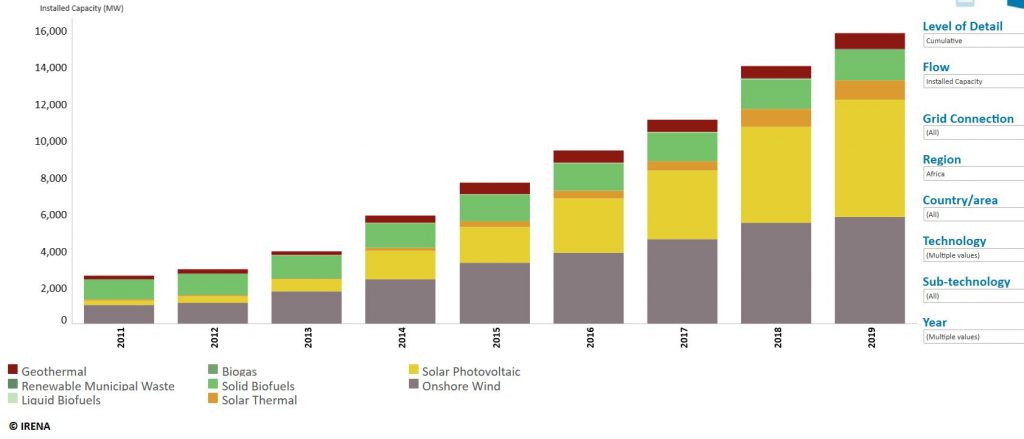
Source: IRENA https://public.tableau.com/views/IRENARETimeSeries/Charts?:embed=y&:showVizHome=no&publish=yes&:toolbar=no
The graph on growing RE fleet shows that by 2019 Africa developed capacity of 16000 MW in non-hydro renewables (25 times more compared to 596 MW of small hydro). This also shows that new renewables already represent 11% of existing capacity in electricity generation.
Figure 2.Annual additions of RE in Africa (MW)
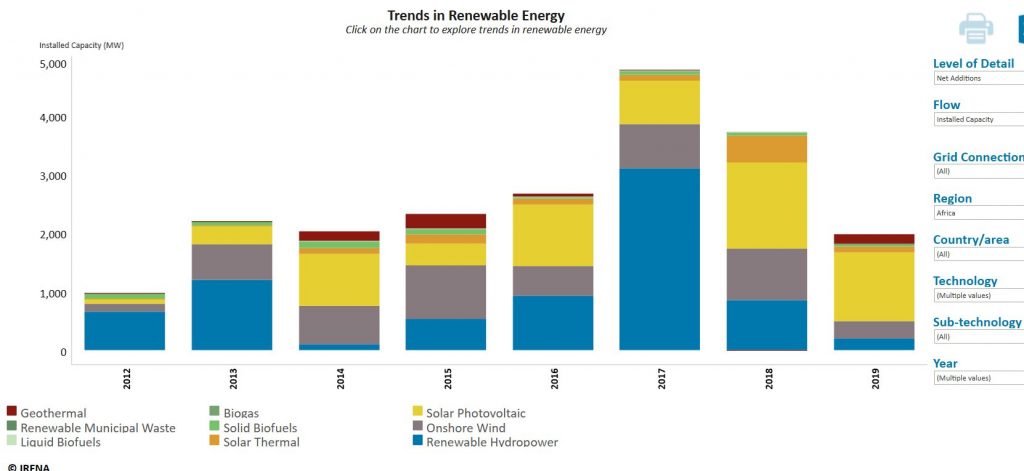
Source: IRENA https://public.tableau.com/views/IRENARETimeSeries/Charts?:embed=y&:showVizHome=no&publish=yes&:toolbar=no
The graph of annual additions of RE in Africa shows that annual capacity additions in solar and wind (more than 1500 MW a year) typically exceed overall capacity of small hydro accumulated over last century(!). Hydro on this graph is not divided in small and large, but if divided then small HPP additions would be hardly noticeable.
CONCLUSION
Understanding that “green small hydro” is a trap leading to inefficient development is rapidly gaining momentum among countries of the world. China started to remove “excessive hydropower” from its rivers since2017 and issued strict regulations to control functioning and development of small hydro. Bosnia and Herzegovina in mid 2020 pledged to stop development of small hydro and cancelled subsidies for its development. In October 2020 the Government of Vietnam announced cancellation of 400 small hydropower projects and strict oversight of existing ones… This list will be expanded as greater number of governments understand the risks and futility of supporting small hydro as a tool for “energy shift”.
Has Your government learnt this lesson???!!!
Compiled by Eugene Simonov, RwB.
Comment are welcome! Simonov@riverswithoutboundaries.org


